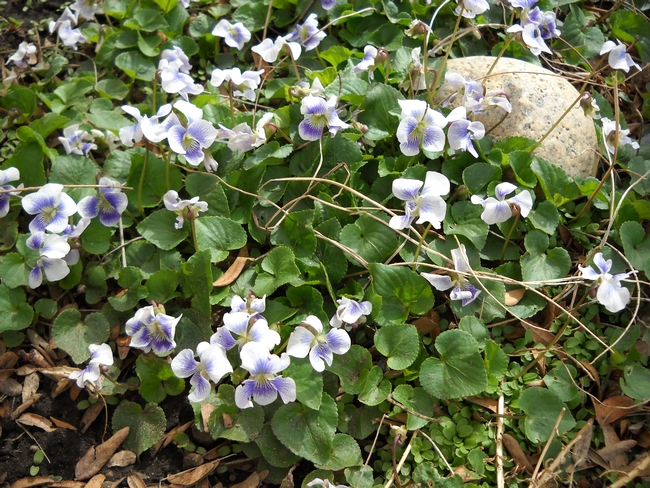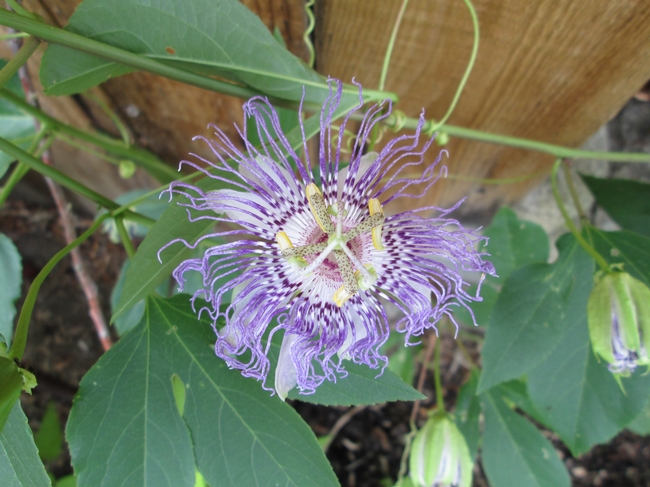We all make gardening mistakes, but there is nothing more vexing than creating self- inflicted problems by choosing a plant for some special effect – beautiful flowers or lush foliage - only to discover that it refuses to stay in its allotted space, and takes off across the garden dominating everything in its path. I mention the following selection from my own experiences – perhaps it will help you to avoid the same mistakes!
Maypop. Passiflora incarnata. Lured by the exotic, tropical-looking flowers and edible fruit I purchased this to cover a rather dull wooden fence. I erected some lattice for it to scramble over and carefully planted the contents of a 2” pot at the base. It cheerfully romped away and flowered as promised, but then I found suckers coming up at regular intervals along the irrigation line bursting through the surface wherever there was an emitter - from under a host of herbaceous treasures and even appearing in the rockery. The latest sucker to emerge is 15 feet away from the parent plant and I will only get fruit if I plant a second one for cross pollination!


Mexican Evening Primrose. Oenothera speciosa. This is has pretty flowers and a long blooming season, but it is also an aggressive spreader. It needs little water and is happy in poor soils. It spreads rapidly by rhizomes and also by seeds, and quickly forms an attractive carpet of spring-flowering pink blooms. Although good for quickly covering banks and places where other plants might not do well, when given water and more fertile soil it is very difficult to control. Even little pieces of root take hold. Make sure if you plant this that you will be able to contain it.
Mint. Mentha spp. There is nothing like the first potatoes of the season cooked with a little mint. Aware of mint's invasiveness I followed the universal planting advice of putting it in a pot which had its bottom cut away, and then plunging it into the ground. That failed to contain it after the first season. Perhaps I should have used a larger pot or not planted the pot so deeply. The roots, not unlike Bermuda grass, rampaged in all directions. I pulled huge mats of them out, but even tiny pieces left behind were soon growing vigorously, and new plants appeared a long way from the original planting. I did finally get the better of it by planting it in a hanging pot over a concrete patio. Surely it would not be able to spread from there. It didn't - it died!
For some other rapidly growing or spreading plants which should be planted with caution visit: http://ucanr.edu/sites/EDC_Master_Gardeners/files/154805.pdf

